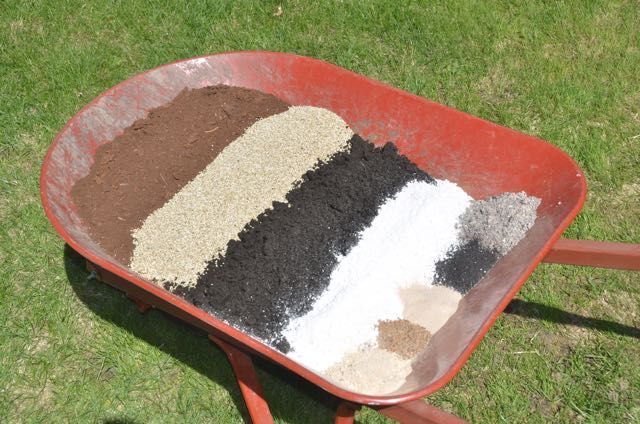Lightweight perlite is a common additive used to improve drainage in potting soils. Some gardeners also recommend incorporating perlite into raised bed soil mixes. However perlite has some distinct drawbacks when used in open garden beds. Understanding the pros and cons allows you to make an informed decision about using perlite in your raised garden.
What is Perlite?
Perlite is a mined volcanic rock that has been heated to extremely high temperatures causing it to expand into lightweight white granules. It has a neutral pH and contains trace minerals. The porous structure enables perlite to hold water and air. Horticultural grades come in various particle sizes.
Potential Benefits of Perlite in Raised Beds
There are a few reasons why gardeners use perlite in raised bed soil
- Improves drainage in dense or compacted soils
- Creates air pockets for healthy root growth
- Retains some moisture to help buffer water availability
- Lightweight texture makes for fluffy, loose soil
- Can be used to adjust or modify soil pH
- Provides calcium and trace minerals
Drawbacks and Risks of Perlite in Garden Beds
However, perlite also comes with some distinct disadvantages:
- Floats up and blows away over time
- Not a sustainable or environmentally-friendly product
- Can compact and crush into useless dust
- May contain toxic levels of fluoride for some plants
- Raises sodium levels in soil over repeated use
- Not a natural component of soil ecosystems
- Expensive compared to local organic alternatives
- Unknown long-term impacts in the garden
Potential Alternatives to Perlite for Raised Beds
Here are some more sustainable, natural options to consider instead of perlite:
-
Compost – Improves texture, nutrients, and water retention.
-
Aged manure – Releases nutrients slowly and provides organic matter.
-
Peat moss – Light, absorbent material that buffers moisture.
-
Leaf mold – Creates air pockets and contributes organic matter.
-
Coir – Made from coconut husks; retains water like peat.
-
Worm castings – Rich source of nutrients, microbes and drainage.
-
Biochar – Lightweight and highly porous while adding nutrients.
-
Wood chips – Provides air pockets as it decomposes slowly.
-
Straw – Lightens heavy soils and improves moisture retention.
-
Pumice – Sustainable volcanic rock that adds air pockets.
Tips for Using Perlite in Raised Beds
If you do wish to incorporate perlite into your raised bed soil mix, follow these tips:
-
Use coarse horticultural grades to minimize compaction issues.
-
Limit perlite to 10-20% of total soil volume at most.
-
Thoroughly mix perlite into soil to prevent it floating to the surface.
-
Add fresh perlite after amending beds each season. Old perlite decomposes.
-
Focus perlite amendments along the bottom and sides of beds for drainage.
-
Cover beds with mulch to prevent perlite from blowing away.
-
Avoid perlite in exposed, windy sites where it can blow into neighboring yards.
-
Check that perlite does not elevate sodium levels over repeated use.
-
Test soil pH regularly as perlite can raise pH over time.
-
Monitor heavy metal levels if using large amounts of perlite.
Benefits of Building Raised Beds Without Perlite
With so many drawbacks, avoiding perlite may be the wisest course of action. Raised garden beds provide many benefits on their own:
-
Allow for customized friable soil mixes perfect for plant roots
-
Improve drainage by elevating soil above ground level
-
Warm soils faster in spring for earlier planting and growth
-
Reduce compaction since beds aren’t walked on
-
Extend the growing season by providing warmer microclimate
-
Reduce weeds when first constructed with quality soil mixes
-
Are accessible for gardeners dealing with mobility challenges
-
Keep plant roots contained and prevent spreading out of bounds
Raised beds boost plant performance through their structure alone. By incorporating organic amendments, you can achieve well-aerated, loose soil ideal for healthy plant growth. Explore more sustainable options first before resorting to perlite.
While perlite can provide some benefits to garden soil, its potential drawbacks make careful consideration important. In raised garden beds, organic alternatives like compost, peat, coir or straw can increase aeration and drainage while also improving long-term soil health. Take time to fully understand the pros and cons before adding perlite to your raised vegetable or flower beds.
How to Amend a Raised Bed Garden Using Perlite
FAQ
Should I add perlite to raised beds?
What are the disadvantages of perlite?
Is perlite food safe?
Can you add perlite to raised bed soil?
Raised bed soil needs to be light and airy, and mixing in perlite is the perfect way to make that happen! Whether building new or refreshing existing raised beds, adding in perlite can help to bring new life. A good rule of thumb is for every 5 gallon bucket of soil, add in a cup of perlite.
What type of perlite is best for potting soil?
Super coarse and coarse perlite: This type of perlite is often used to amend raised beds and garden beds, or dense soils with high water-holding capacity (clay). Size #4 perlite is a whopper of a particle that should only be used for extremely heavy soil. Medium perlite: You’ll mostly see medium-grade perlite in commercial potting soil.
Why do you need perlite in a garden?
You garden in a wet or humid climate. Adding more perlite to containers or garden beds helps keep the soil from becoming waterlogged. You’re starting seeds. Because vermiculite holds moisture better than perlite, it helps keep seeds from drying out during germination.
Should I add perlite to my seed starting soil?
Adding in perlite to your seed starting soil can help young seedlings have an easier time expanding their roots. One of the best and most underutilized ways to use perlite is in raised beds. Raised bed soil needs to be light and airy, and mixing in perlite is the perfect way to make that happen!

